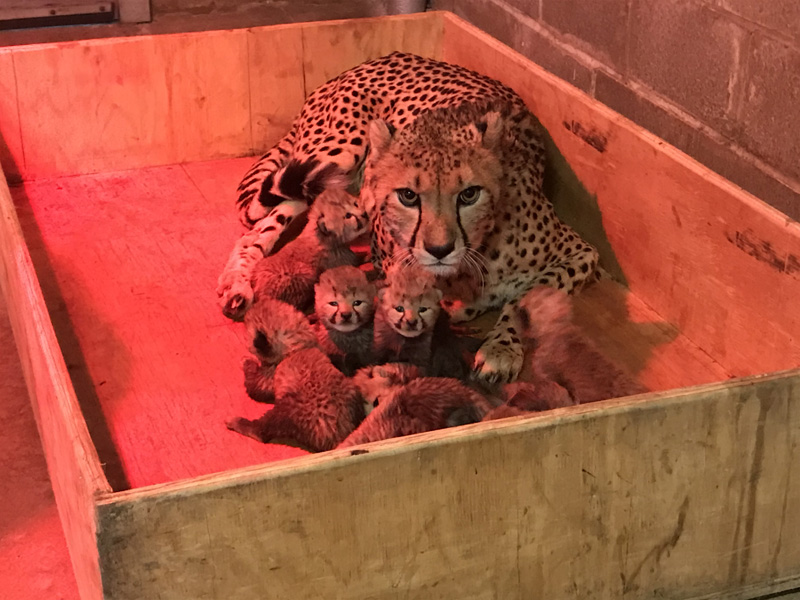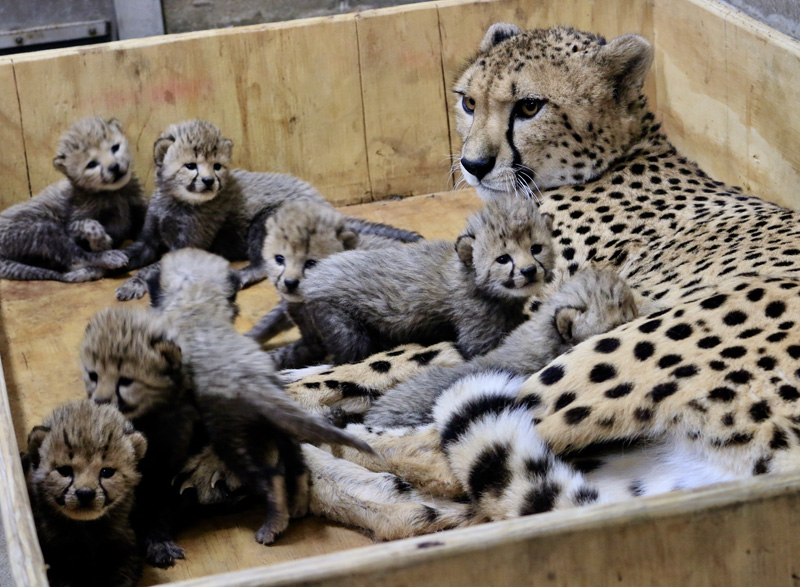
For the first time in Saint Louis Zoo history, a Cheetah has given birth to eight cubs. Three males and five females were born at the Saint Louis Zoo River’s Edge Cheetah Breeding Center on November 26, 2017.
In over 430 litters documented by the Association of Zoos and Aquariums (AZA), this is the first time a female Cheetah has produced and reared on her own a litter of eight cubs at a zoo. The average litter size is three to four cubs.
The first few months of life are critical for newborn Cheetahs. The Saint Louis Zoo’s animal care staff is closely monitoring the new family and it appears that all eight cubs are healthy. Four-year-old Bingwa (BING-wah), which means “champion” in Swahili, continues to be an exemplary mother, according to the Cheetah care team.
“She has quickly become adept at caring for her very large litter of cubs: grooming, nursing and caring for them attentively,” says Steve Bircher, curator of mammals/carnivores at the Saint Louis Zoo.
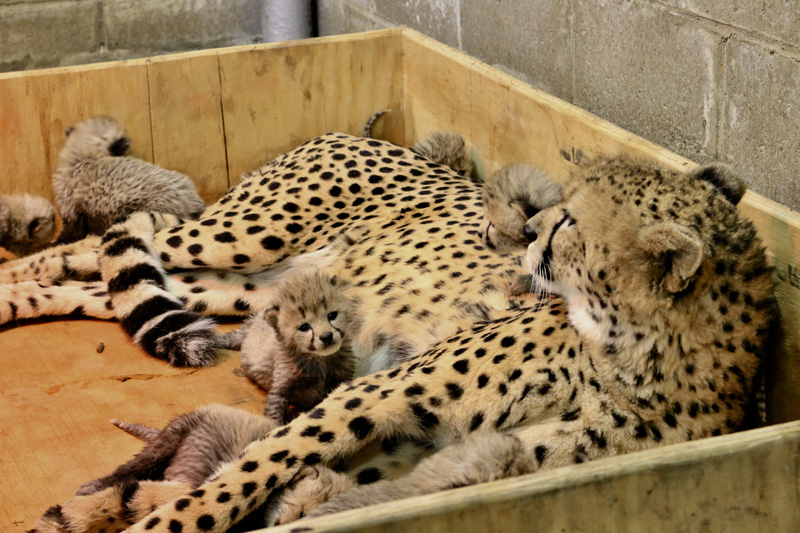
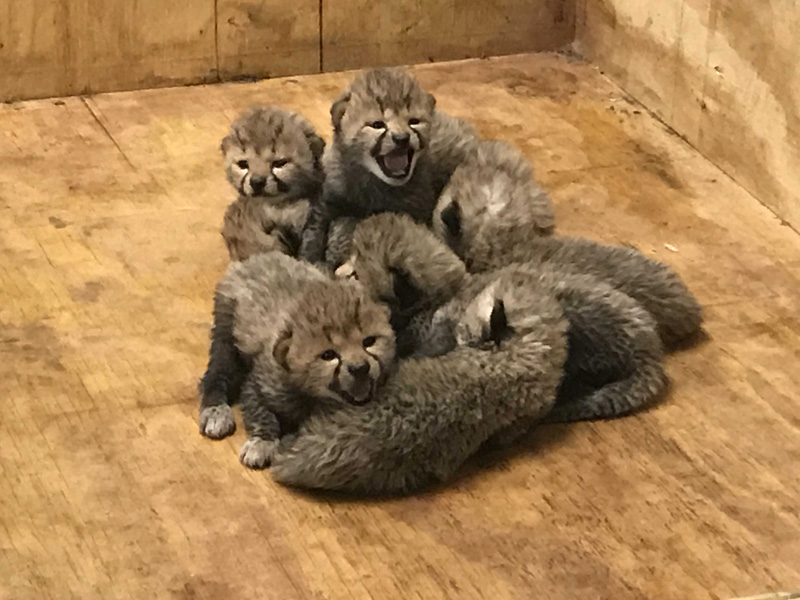
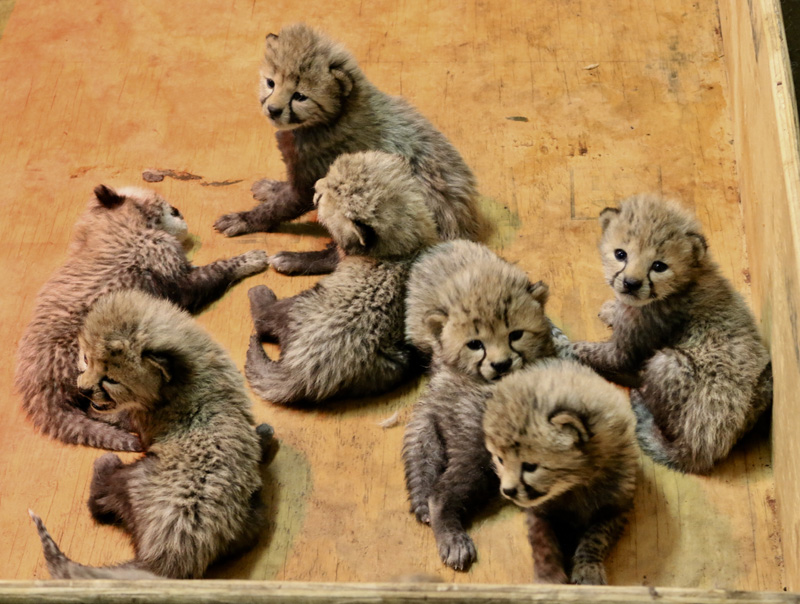 Photo Credits: Carolyn Kelly & Saint Louis Zoo (Images 1,2,4) / Saint Louis Zoo (Images 3,5)
Photo Credits: Carolyn Kelly & Saint Louis Zoo (Images 1,2,4) / Saint Louis Zoo (Images 3,5)
Bingwa is on loan to the Saint Louis Zoo from Wildlife Safari in Winston, Oregon. The cub’s nine-year-old father, Jason, is on loan from White Oak Conservation in Yulee, Florida. The birth of these eight cubs is a result of a breeding recommendation from the AZA Cheetah Species Survival Plan (SSP), a program to manage a genetically healthy population of cheetahs in North American zoos.
“We’ve brought together Cheetahs from great distances to continue this important breeding program,” says Bircher. “These handsome cats add genetic diversity to the North American Cheetah SSP population.”
Since 1974, the Zoo has been a leader in Cheetah reproductive research and breeding. Over 50 cubs have been born at the Saint Louis Zoo’s Cheetah Breeding Center.
Historically, Cheetahs have ranged widely throughout Africa and Asia. Today, fewer than 10,000 individuals inhabit a broad section of Africa, and less than 100 remain in Iran. Over the past 50 years, Cheetahs have become extinct in at least 13 countries. The main causes of decline are human-cheetah conflict, interspecific competition and lack of genetic diversity.
To help protect Cheetahs in the wild, the Saint Louis Zoo WildCare Institute Center for Conservation of Carnivores in Africa is working with its partners in Tanzania and Namibia to coordinate cheetah conservation efforts, including education, research and other programs to mitigate human-cheetah conflicts.
“Cheetahs are frequently persecuted for killing livestock. Our conservation partners are finding ways to improve the lives of local herders by providing education opportunities, food and medical supplies, so they can live peacefully with Cheetahs and support their protection,” says Bircher.
According to staff, the Zoo’s mother and eight cubs are doing well and will remain in their private, indoor maternity den behind the scenes at River’s Edge for the next several months.
